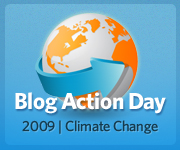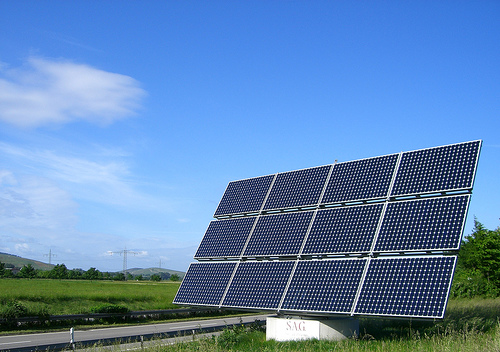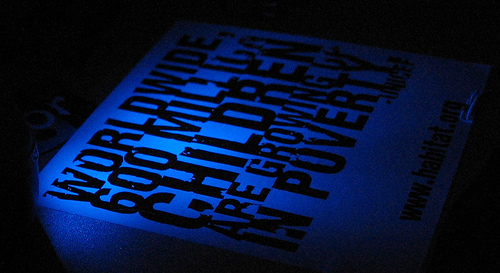Leadership's Future: Abusing Water To Produce Energy
Thursday, October 15th, 2009 Today is Blog Action Day and the topic is Climate Change, so I asked Chris Blackman, who is a strategic consultant specializing finding both private and public funding in the green and clean technology sector, to offer her thoughts on a subject that enrages me every time it comes up—which is more and more often. The subject is the sacrificing of one limited resource for the sake of another.
Today is Blog Action Day and the topic is Climate Change, so I asked Chris Blackman, who is a strategic consultant specializing finding both private and public funding in the green and clean technology sector, to offer her thoughts on a subject that enrages me every time it comes up—which is more and more often. The subject is the sacrificing of one limited resource for the sake of another.
From Chris…
Would you choose to go hungry and thirsty so that you could have energy?
That choice is the dark side of clean energy.
A ‘clean coal’ power plant uses tens of thousands of gallons of water daily—water that cannot even be reused or recycled—because it is so fouled and contaminated.
To biomass’ benefit the water it consumes is reused over and over again, but turning waste to energy using the aerobic digestion method has a 1:1 ratio—one ton of waste requires one ton of water to process that waste.
In some ways, we have adopted an anything goes approach to producing some green energy and it seems a bit deja vu: using oil products to produce other energy forms.
In this case, it is even worse—it is not only the environmental impact but also the real possibility of going thirsty or hungry if we use our drinking or irrigation water to produce energy.
A recent New York Times article revealed that a solar power company dangled the opportunity to create hundreds of new jobs in a desert community at the cost of “consuming 1.3 billion gallons of water a year, about 20 percent of the desert valley’s available water.”
All that community needs to do is to look at the legal battle being waged right now amongst the states that have access to the Colorado river to vividly understand why they should not sell their water rights, in the hopes of procuring water from their neighbors.
Already there are many parts of the country in which the water is already unusable in spite of the Clean Water Act.
In the last five years alone, chemical factories, manufacturing plants and other workplaces have violated water pollution laws more than half a million times. … the vast majority of those polluters have escaped punishment. State officials have repeatedly ignored obvious illegal dumping, and the Environmental Protection Agency, which can prosecute polluters when states fail to act, has often declined to intervene.
I am not in any way advocating stopping our investments in clean and green energy; however, it is tunnel vision to invest in clean energy at the cost of clean water.
There are places in this country better suited, where the solar and water requirements are better aligned: Florida and the rest of the Southeast, at least in most years. (See Chris’ post on how dark, rainy Germany used US-invented technology to become a global solar leader.)
The opening question may seem melodramatic, but I wonder what the former Soviet Republic would give today to have the Aral Sea back, since today it is mostly a dry lifeless bed of blowing salt.
Was its loss, and the salt poisoning of the surrounding lands, worth the measly two decades of cotton they produced while depleting its water sources? The environmental and economic toll of the Aral Sea’s destruction could end up being as costly as Chernobyl.
That is not melodrama, that is precedent.
Want more proof? T. Boon Pickens, who isn’t known for his ‘friend of the community’ attitudes, is betting 100 million dollars that water is the new oil.
‘Oh Father, spare me the need to eat and drink so that I may use these resources for electricity’ – who would ever pray for that?
We still don’t get “the vision thing.”
When will we begin to approach our economy and the environment as a single integrated whole?
When will we balance out the true costs and benefits of our activities?
When will the options we choose from include using less, instead of always inventing new ways to consume more?
When will we learn?
What do you think?
Your comments—priceless
Don’t miss a post, subscribe via RSS or EMAIL
Image credit: Blog Action Day
















